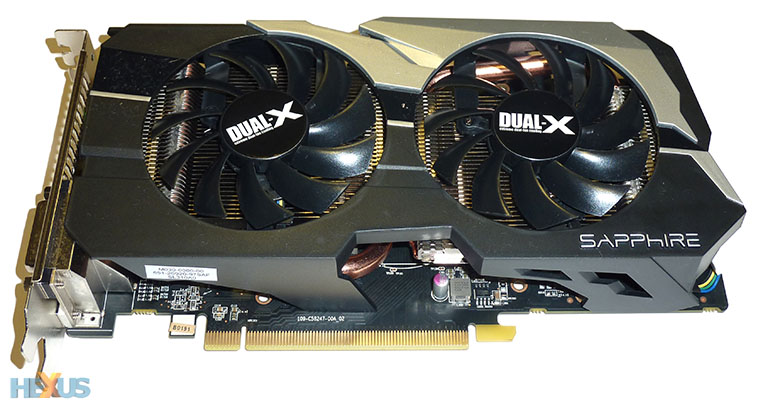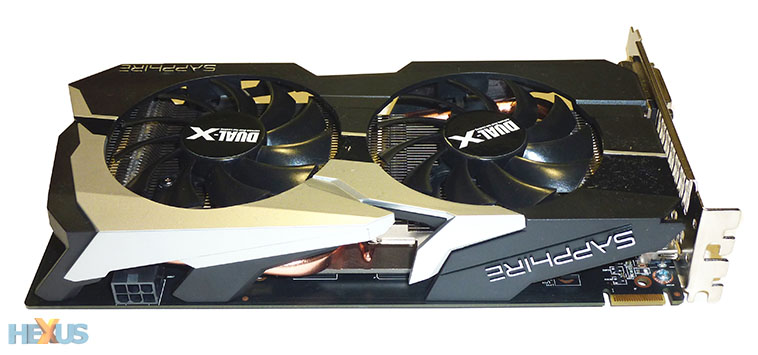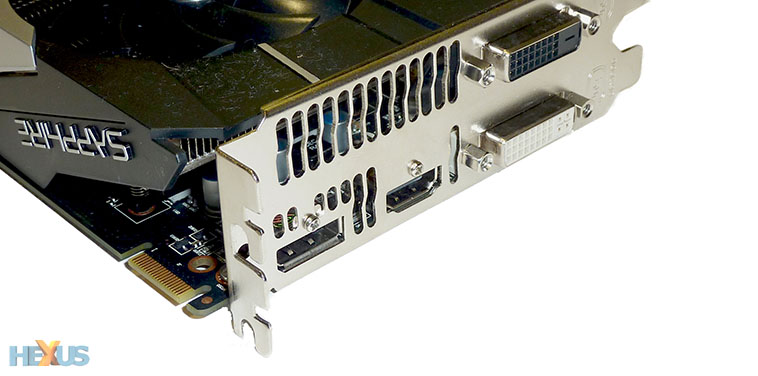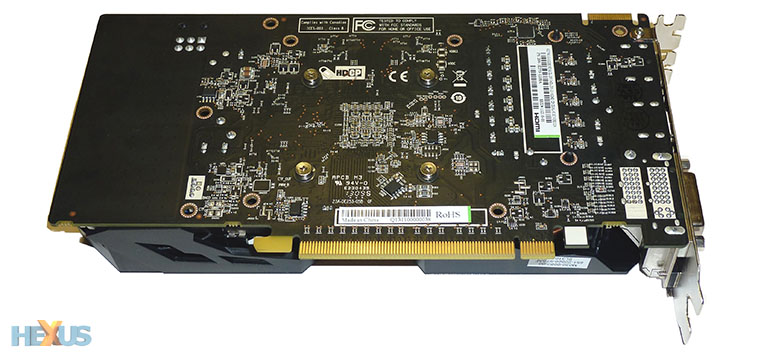Sapphire's Dual-X card
AMD quotes a board TDP that's practically identical to the HD 7770 GHz's. Add-in board partners (AIBs) therefore have a choice; they can either run with the same cooling employed on the Cape Verde XT card, which'll be sufficient, or use a longer PCB and the cooler present on the HD 7850 GPUs.
AMD isn't sampling a reference board this time, going against the grain of previous launches. Rather, in conjunction with Sapphire, it provided the press with actual cards that potential purchasers can buy.

Sapphire's chosen to go with the very best heatsink-and-fan units present on the HD 7770, and the Dual-X cooler is similar to the Vapor-X used on a previously reviewed board. That said certain Sapphire Radeon HD 7850s also have a Dual-X cooling solution. Long story short, this heatsink has more than enough heat-removal clout for an 85W TDP GPU.
The PCB and cooler both measure 7.5in long and take up two expansion slots. The heatsink is open-air in nature, meaning the majority of the hot air will recirculate through the chassis. Construction is reasonable, if not fantastic, as the plastic heatsink cover bends when light force is applied. Meanwhile, the card's twin 80mm fans sit on top of two aluminium heatsinks that are pierced by 8mm-thick heatpipes.

The board's power is such that it requires a six-pin PCIe connector from the PSU and a single CrossFire connector paves the way for two of these cards to be used in unison - something that the price-comparable GTX 650 Ti does not allow. Interestingly, and as an aside, AMD's own research reckons that 25 per cent of all CrossFire users run Radeon HD 7700-series cards.

AMD's familiar quartet of outputs are on display (excuse the pun) here: dual-link DVI, single-link DVI, HDMI and DisplayPort. The output mechanism is such that, on normal HD 7790s, the three right-hand interfaces cannot be used concurrently from the get-go; you'll either need to use DisplayPort or an adapter. Sapphire, however, imbues this OC card with its FleX technology, where extra circuitry is added to enable three-screen (non-DisplayPort) running without an adapter. Good stuff, Sapphire.

There's not a whole happening on the rear. A closer look at the board shows that AIBs may well be able to produce shorter cards based on the HD 7790 ASIC, perhaps even a slimmer offering in the vein of the GeForce GTX 650 Ti.
The reason why Sapphire's chosen a larger card is revealed when taking a peek at the specifications. An AMD-specified HD 7790 runs at 1,000MHz core and 6,000MHz memory. Sapphire boosts this to 1,075MHz core and 6,400MHz, respectively, providing approximately seven per cent more power.









